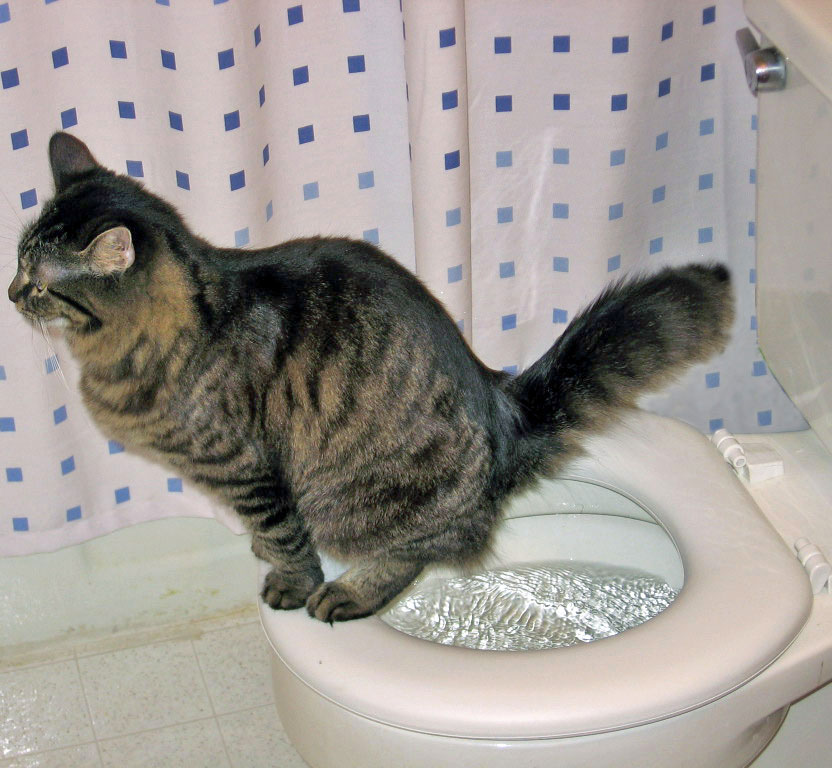Potential Issues of Flushing Cat Poop Down Your Toilet - Safeguard Your Pipes
Potential Issues of Flushing Cat Poop Down Your Toilet - Safeguard Your Pipes
Blog Article
The publisher is making a few great points on the subject of Can You Flush Cat Poo or Litter Down the Toilet? as a whole in the content in the next paragraphs.

Introduction
As feline owners, it's important to be mindful of how we throw away our feline buddies' waste. While it may seem hassle-free to flush feline poop down the commode, this method can have harmful repercussions for both the environment and human health and wellness.
Alternatives to Flushing
The good news is, there are safer and more accountable methods to take care of pet cat poop. Think about the adhering to alternatives:
1. Scoop and Dispose in Trash
One of the most typical technique of dealing with feline poop is to scoop it right into an eco-friendly bag and toss it in the garbage. Make sure to use a committed litter scoop and throw away the waste immediately.
2. Use Biodegradable Litter
Choose biodegradable cat litter made from products such as corn or wheat. These clutters are environmentally friendly and can be safely dealt with in the garbage.
3. Hide in the Yard
If you have a lawn, think about burying cat waste in a designated area away from vegetable gardens and water resources. Make sure to dig deep adequate to prevent contamination of groundwater.
4. Install a Pet Waste Disposal System
Buy a family pet garbage disposal system specifically developed for pet cat waste. These systems utilize enzymes to break down the waste, lowering smell and ecological effect.
Wellness Risks
In addition to environmental issues, purging feline waste can likewise pose wellness threats to humans. Pet cat feces might include Toxoplasma gondii, a bloodsucker that can create toxoplasmosis-- a possibly severe illness, specifically for expecting ladies and people with weakened immune systems.
Ecological Impact
Flushing feline poop presents hazardous virus and bloodsuckers into the water, posing a substantial danger to marine environments. These contaminants can adversely impact aquatic life and compromise water high quality.
Verdict
Responsible pet ownership expands past supplying food and sanctuary-- it also includes proper waste administration. By refraining from purging feline poop down the commode and selecting alternative disposal techniques, we can lessen our ecological impact and shield human health.
Why Can’t I Flush Cat Poop?
It Spreads a Parasite
Cats are frequently infected with a parasite called toxoplasma gondii. The parasite causes an infection called toxoplasmosis. It is usually harmless to cats. The parasite only uses cat poop as a host for its eggs. Otherwise, the cat’s immune system usually keeps the infection at low enough levels to maintain its own health. But it does not stop the develop of eggs. These eggs are tiny and surprisingly tough. They may survive for a year before they begin to grow. But that’s the problem.
Our wastewater system is not designed to deal with toxoplasmosis eggs. Instead, most eggs will flush from your toilet into sewers and wastewater management plants. After the sewage is treated for many other harmful things in it, it is typically released into local rivers, lakes, or oceans. Here, the toxoplasmosis eggs can find new hosts, including starfish, crabs, otters, and many other wildlife. For many, this is a significant risk to their health. Toxoplasmosis can also end up infecting water sources that are important for agriculture, which means our deer, pigs, and sheep can get infected too.
Is There Risk to Humans?
There can be a risk to human life from flushing cat poop down the toilet. If you do so, the parasites from your cat’s poop can end up in shellfish, game animals, or livestock. If this meat is then served raw or undercooked, the people who eat it can get sick.
In fact, according to the CDC, 40 million people in the United States are infected with toxoplasma gondii. They get it from exposure to infected seafood, or from some kind of cat poop contamination, like drinking from a stream that is contaminated or touching anything that has come into contact with cat poop. That includes just cleaning a cat litter box.
Most people who get infected with these parasites will not develop any symptoms. However, for pregnant women or for those with compromised immune systems, the parasite can cause severe health problems.
How to Handle Cat Poop
The best way to handle cat poop is actually to clean the box more often. The eggs that the parasite sheds will not become active until one to five days after the cat poops. That means that if you clean daily, you’re much less likely to come into direct contact with infectious eggs.
That said, always dispose of cat poop in the garbage and not down the toilet. Wash your hands before and after you clean the litter box, and bring the bag of poop right outside to your garbage bins.
https://trenchlesssolutionsusa.com/why-cant-i-flush-cat-poop/
I ran across that blog posting on Can You Flush Cat Poo or Litter Down the Toilet? while doing research the web. Those who liked our blog post kindly don't forget to pass it around. Kudos for your time. Visit us again soon.
Request Service Report this page